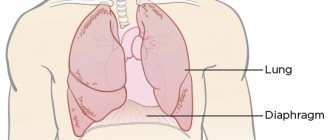Idiopathic edema occurs for no apparent reason, although nothing happens without a reason; it occurs in women of Balzac age and who are somewhat overweight. As a rule, they occur much less frequently in men. Swelling is noticeable on both legs and arms, especially in hot weather. Most likely, they have the same cause as swelling during premenstrual syndrome - cyclical fluctuations of hormones with excess production of estrogen and lack of progesterone. For a short time, vascular permeability changes and sodium is retained in the tissues, pulling water with it. The transition to the next phase of the cycle removes swelling until the next time.
During normal pregnancy , in the second half of it, the feet and ankles swell. This is due to changes in hormone levels, supplemented by some difficulties in venous outflow due to an enlarged uterus, as well as hydrostatic pressure during prolonged standing. A protective regime, when the pregnant woman’s physical activity evenly alternates with a horizontal position of the body with the feet elevated by a pillow, helps get rid of unpleasant swelling without additional medications. In case of pathology of pregnancy, accompanied by an increase in blood pressure and the appearance of protein in the urine - proteinuria, edema also occurs, but this is serious and will not go away easily; treatment is necessary.
Our expert in this field:
Serebryansky Yuri Evstafievich
Cardiologist, geriatrician, therapist, professor, Honored Doctor of the Russian Federation, Doctor of Medical Sciences
Call the doctor Reviews about the doctor
Swelling of the legs due to diseases of the cardiovascular system
Edema occurs with the following pathological changes:
- acute and chronic diseases of the myocardium - heart muscle;
- valve pathologies - heart defects;
- changes in coronary vessels - myocardial ischemia;
- heart rhythm disturbances - arrhythmias;
- diseases of the pericardium - the cardiac lining.
Edema is part of a complex of symptoms of heart failure when the myocardium is not able to effectively perform its pumping function or valve defects do not allow the atrium to be separated from the ventricle during rhythmic contractions of the heart chambers, which contributes to the backflow and constant stagnation of the remaining blood in the chamber. With arrhythmia, the parts of the heart contract irregularly, that is, defectively and not synchronously, disrupting the blood supply to all organs and tissues. As a result of a failure of heart contractions, blood stagnation forms in the venous system.
The development of cardiac edema is still preceded by shortness of breath during physical exertion, and then at rest. Swelling increases gradually, starting from the feet, the thickening of soft tissues is bilateral and symmetrical, if there is no concomitant varicose veins. At first, the edematous tissues are soft, like dough, spreading upward; the stagnant interstitial fluid changes its consistency in the lower sections to a denser one. The tissue on the foot has a dense consistency, in the lower third of the shin it is slightly less dense, in the middle third it is elastic, and under the kneecap it is soft, doughy. The swelling intensifies in the evening, by the morning the tissue compaction decreases somewhat, but does not go away completely.
The connection between edema and a disease of the cardiovascular system is established quite quickly during examination of the patient and examination. It is enough to do an ECG in case of arrhythmia; in case of valve disease and changes in the myocardium, a change in the boundaries of the heart and congestion in the lungs can be seen on a chest x-ray. Unfortunately, removal of leg swelling is only possible with effective treatment of the root cause - heart disease. Of course, expelling excess fluid with the help of diuretics helps for a while, but drug resistance quickly develops, and you have to increase doses and add whole diuretic combinations.
Request a call back. We work around the clock
Message sent!
expect a call, we will contact you shortly
Treatment of edema
Treatment of edema is carried out in accordance with the cause of its development. Here are some general recommendations.
- You should limit your fluid intake to 1.5 liters per day, and sometimes less.
- You also need to reduce your salt intake to 1–1.5 g per day.
- Diuretics should be taken only under the supervision of a doctor who monitors the patient’s condition and monitors the level of electrolytes in the blood. Diuretics can lead to a decrease in potassium levels in the body, so it is recommended to eat dried apricots, raisins, rice, baked potatoes and other foods rich in this trace element.
For cardiovascular diseases, a cardiologist, after diagnosing “cardiac” edema, selects therapy to maintain a stable state of the vascular system. A patient with heart failure should visit a cardiologist regularly throughout his life. In case of venous insufficiency, conservative or surgical treatment is carried out by a vascular surgeon-phlebologist.
If the swelling is caused by kidney disease , in addition to relieving the swelling, the doctor (therapist or nephrologist) prescribes therapy for the underlying disease, which may include antibiotics, anti-inflammatory hormonal drugs, etc.
In case of allergic edema , which is accompanied by difficulty breathing, urgent medical attention is required. Before help is provided, you should take an antihistamine, if the condition is severe - prednisolone or dexamethasone. In case of an attack of suffocation of an allergic nature, take 1-2 breaths from an inhaler recommended by your doctor (allergist).
Swelling of the legs due to venous diseases
Swelling in varicose veins of the lower extremities is far from the first symptom; they appear when the process is quite advanced. As a rule, varicose veins are manifested by painful fatigue and unpleasant sensations in the calf muscles that go away when walking. Venous edema is unilateral; when varicose veins of both extremities are affected, the swelling is bilateral, but not symmetrical. The soft tissues of the legs are dense; when standing, especially without movement, the swelling intensifies along with painful sensations. In a horizontal position with a pillow under the foot, the swelling decreases.
Swelling develops slowly; first, tissue pastiness appears in the perispinal region in the evening; as the process progresses, hardening of the soft tissues spreads above the ankle and becomes noticeable by the middle of the day. In case of severe damage to the veins of the limb, the swelling does not go away by the morning, even with an elevated position of the leg during night sleep. The patient is worried not so much about swelling as about pain and rapidly increasing fatigue in the legs, which are later joined by trophic changes in the skin up to non-healing ulcers. When treating venous pathology, swelling of the legs also decreases.
Prevention measures
Prevention is relevant only for heart failure, since swelling of the legs is a symptom of it. In order to reduce the likelihood of pathology, it is necessary:
- perform gymnastics daily for 15-20 minutes a day;
- exercise 2-3 times a week;
- do a warm-up every hour while sitting or standing;
- eat a balanced diet;
- quit smoking and alcohol;
- visit a doctor 1-2 times a year.
It is impossible to completely prevent the onset of heart failure. The risk of its development increases if close relatives have a similar disease.
Leg swelling is a consequence of heart failure. To eliminate them, it is necessary to normalize the functioning of the heart. During the treatment period, you can alleviate the condition of the legs with swelling using special creams, ointments or folk remedies.
Swelling of the legs due to vascular atherosclerosis
With atherosclerotic damage to arteries of any diameter, ischemia develops - a lack of nutrition of the limb, which is expressed in a decrease in its volume, as if “shrinking” in size. But when, when the lumen of the artery narrows, it is additionally clogged by the resulting thrombus, acute ischemia of the limb occurs, which is characterized by an increase in swelling of the tissue below the level of the vessel block. When a blood clot forms “in situ,” ischemia increases gradually; when a blood clot arrives with the blood flow and does not pass through the atherosclerotic narrowing in diameter, which is called “embolism,” ischemia develops literally within a few hours.
Sudden cessation of arterial blood supply - acute ischemia of the limb is accompanied by a vivid clinical picture with increasing intensity of pain, numbness of the limb with unpleasant sensations - paresthesia. Against the background of impaired blood flow, the skin becomes pale, acquires marble stains, turns blue and swells very much - “columnar.” The condition is very serious and requires urgent surgical intervention to restore the patency of the vessel, in order to avoid the development of gangrene with subsequent amputation.
Why us
- Doctors. We welcome specialists of the highest qualification category, holders of academic degrees, with extensive experience in leading Russian clinics.
- Individual approach. The doctor will develop an individual treatment plan for each patient in accordance with the cause of development and clinical picture of the disease.
- Complexity. Effective treatment of edema and the diseases that cause them is possible thanks to the close cooperation of our clinic’s specialists - therapist, cardiologist, allergist, endocrinologist, urologist, etc.
- Expert equipment. All studies are carried out using modern equipment and are highly accurate.
- Comfort. All consultations, studies and treatment are carried out within our hospital, which allows our patients to save
You can see prices for services
Swelling of the legs due to renal pathology
Edema is caused by the development of renal failure in acute or chronic kidney disease. For quite a long time, kidney pathology can exist hidden, and even examination is not always able to reveal it, if it is not aimed at searching for pathology of the urinary system. As a rule, renal failure in the initial stage is detected very rarely, but even with adequate diagnosis, treatment consists of maintaining a lifestyle with regular examinations. Over the course of several years, the patient gets used to his diagnosis and quite good condition, so much so that he forgets about it. Kidney failure progresses quite rapidly, and edema syndrome, as its important symptom, develops in just a few days.
Renal failure can develop with any kidney disease or kidney complication of diabetes mellitus or systemic diseases. For example, with acute or chronic damage to the renal structural unit of the glomerulus - glomerulonephritis, the so-called nephritic edema develops. It is localized in areas with loose subcutaneous tissue, starting from the face - these are “bags” under the eyes in the morning and thick, translucent eyelids with fluid, which patients simply explain: “I drank tea at night,” and therefore does not consider it necessary to burden the doctor with such a small amount of visit.
With the worsening of functional kidney failure, swelling quickly and almost evenly spreads throughout the body, the feet and legs seem to swell, unlike cardiac edema, by the evening they decrease somewhat, but the next day they arrive in an even greater volume. It will not be possible for a long time to pay attention to the increasing swelling, because it is often combined with high blood pressure and a decrease in the amount of urine produced. The whole person “swells up like a pillow” - this is anasarca, fluid appears in the cavities: abdominal, chest, cardiac shirt. In this situation, hemodialysis and emergency care are required. The effectiveness of reducing edema depends on the results of therapy for renal failure.
Diagnostic methods
Initially, referrals for examination are given by a therapist. In case of previously detected heart failure and edema, the diagnosis is carried out by a cardiologist. To confirm the diagnosis you need:
- collecting anamnesis - the presence of chronic diseases, how long ago symptoms of the disease appeared, lifestyle;
- auscultation - listening to heart sounds using a stethoscope;
- blood pressure measurement – patients are often prescribed 24-hour monitoring of blood pressure and heart rate;
- electrocardiogram - identifying possible disruptions in the functioning of the heart;
- echocardiography – determination of anatomical abnormalities.
If concomitant diseases are detected, additional diagnostics are prescribed. At the third stage of heart failure, an examination of the functionality of the kidneys, liver, and ultrasound of the abdominal cavity is required to exclude ascites.
Swelling of the legs due to liver diseases
When liver function is impaired as a result of acute and chronic hepatitis of any etiology, albumin protein is not produced in sufficient quantities, and “protein-free” edema develops. In addition, with any pathological process, scar connective tissue is formed in the liver, displacing liver cells - hepatocytes. Scar tissue - fibrosis and cirrhosis - interferes with the normal outflow of blood through the venous system; the veins of the abdominal and thoracic cavity themselves are deformed by varicose nodes. Fluid is retained in the abdominal cavity - ascites, which further disrupts the circulation of blood and lymph, forming a persistent symmetrical and rather dense swelling of the tissue, gradually rising from the feet to the abdominal wall. Treatment of ascitic syndrome is very complex and, over time, quite hopeless if it is not possible to perform a liver transplant.
Swelling of the legs due to diseases of the lymphatic system of the extremities
Damage to lymphatic vessels and nodes is possible with some acute infections and malignant tumors, injuries of the inguinal-femoral region, as well as after surgical or radiation treatment of peripheral lymphatic collectors that “suck” lymphatic fluid from a certain anatomical zone. Damage to the lymphatic system of the lower extremity is often called “elephantiasis” due to the similarity of the shape of the leg. Lymphatic edema is characterized by high density and stability, unilateral lesions. With genetic inferiority of the lymphatic system - idiopathic lymphedema, the damage to the legs is bilateral, but always asymmetrical.
Swelling increases gradually, starting with lymphedema - a mild enlargement of the dorsum of the foot, which over time becomes like a pad, while the toes are completely normal in size. Gradually, the skin and fiber grow into connective tissue and are gradually replaced by a scar structure. The leg seems to be dressed in a carelessly sewn cotton trouser leg with loosening and jumpers, rough folds, irregularly shaped cushions and small depressions. A small skin wound takes weeks to heal, clear lymph oozes from it; infection with staphylococcus can lead to erysipelas, which significantly aggravates existing lymphostasis. Erysipelas often recurs and each exacerbation complements the soft tissue defects of the leg.
Acute lymphedema - lymphedema develops with tumor damage to the inguinal, femoral and retroperitoneal lymph nodes, as well as with a large tumor of the pelvic organ. This is a very painful, rapidly growing swelling of the leg, which becomes like a pillar with marble stains on pale bluish skin. In case of acute blockade of lymphatic drainage, pronounced trophic disorders of soft tissues and minor thromboses of the veins of the lower extremities are noted, the leg is cold “like ice” and vascular pulsation is weakened.
The swelling brings unspeakably painful suffering, movements in the joints are impossible due to the extreme tension of the soft tissues, the patient feels that the skin will tear when moving. It is almost impossible to restore the function of the lymphatic collector affected by the tumor. Regression of lymphatic edema is possible with malignant tumors of the lymphatic system and malignant testicular tumors that are highly sensitive to chemotherapy, but not with cancer metastases to the lymph nodes.
We will call you back
Message sent!
expect a call, we will contact you shortly
Swelling of the legs due to joint pathology
Despite the fact that when a joint is damaged, the swelling can be quite intense, it is the dysfunction of the joint and pain that comes to the fore. Edema is secondary and is caused by blockage of lymphatic fluid flow as a result of inflammatory changes. It is localized in the joint area, therefore it is always one-sided, with fairly clear boundaries, local redness of the skin and an increase in temperature over the joint.
The manifestation of edema follows either the onset of pain and movement disorders, or in parallel with other symptoms, but not earlier. In case of chronic arthrosis and joint injury, the clinical picture differs only in the speed of development of edema: with arthrosis - gradually, with injury - quickly, with the same speed the edema is stopped and subsides as a result of therapy.
It is possible to develop swelling of the legs due to a combination of several etiological causes, each of which independently can lead to swelling. For example, swelling of the legs as a result of heart failure may coincide in occurrence with swelling due to varicose veins or chronic arthrosis. In any case, modern diagnostic capabilities make it possible to make a differential diagnosis and prescribe treatment for the underlying disease, since edema of the lower extremities does not develop on its own, but always has a cause.
Reasons for the development of edema
- Kidney diseases: glomerulonephritis, nephrotic syndrome, renal failure;
- heart diseases: heart failure,
- vein lesions (varicose veins, inflammation, thrombosis);
- liver diseases: cirrhosis of the liver, blockage of the hepatic veins;
- diseases of the endocrine system: hypothyroidism, diabetes;
- severe cancer;
- nutritional dystrophy;
- pregnancy;
- allergic reactions: insect bites, contact with an allergen.
Depending on the type, swelling can lead to retinal detachment, stroke, seizures, and even death. It is unacceptable to ignore the problem. To determine the cause of swelling, sign up for a consultation with specialists at the Yauza hospital.








